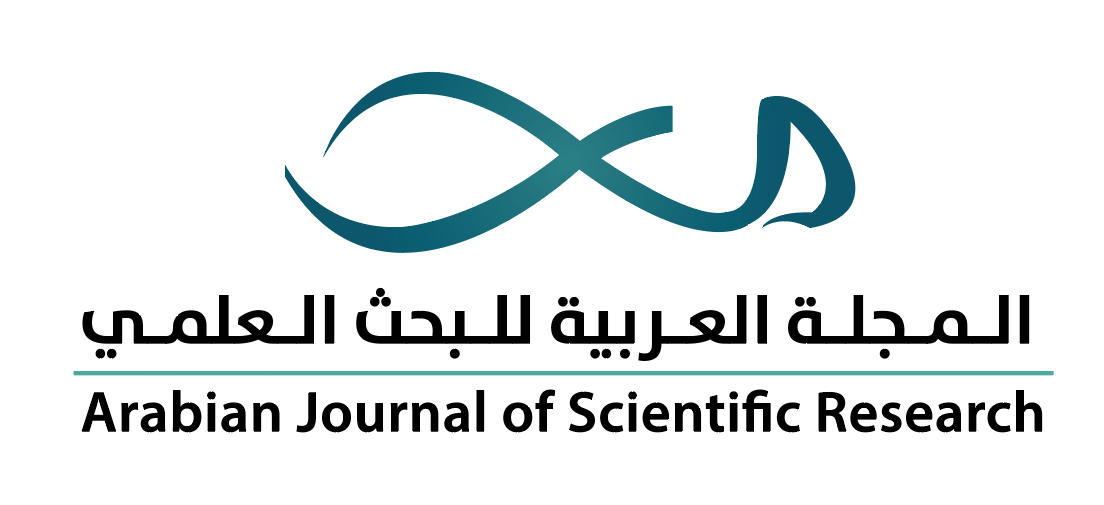-
oa تقييم كفاءة مخلفات أوراق الشاي الأحمر في امتزاز صبغة الميثيلين الأزرق من النفايات السائلة: دراسة تجريبية لعوامل الأيزوثيرم والحركية والديناميكية الحرارية
- Source: Arabian Journal of Scientific Research-المجلة العربية للبحث العلمي, Volume 5(2024), Issue 1, Apr 2024,
-
- 24 December 2023
- 05 March 2024
- 30 April 2024
Abstract
الملخص
هدف هذا البحث إلى دراسة كفاءة مواد مازة تم تحضيرها من مخلفات أوراق الشاي الأحمر في امتزاز صبغة الميثيلين الأزرق (MB) من المحلول المائي. فتم تحضير سطحين من مخلفات أوراق الشاي؛ وهما المسحوق الجاف DM ومسحوق الفحم CM. وتم تقييم تأثير زمن التلامس، وكمية المادة المازة، والأس الهيدروجيني، والتركيز الابتدائي على عملية الامتزاز. كما تم مقارنة النتائج العملية مع بعض النماذج النظرية للاتزان الحراري والديناميكية الحرارية والحركية لعمليات الامتزاز. وأظهرت النتائج أن أعلى سعة امتزاز كانت للمسحوق الجاف (11.50 ملغم/غم) عند pH 7.0، بينما كانت لفحم الأوراق (10.60 ملغم/غم) عند pH 10.0. كما أظهرت النتائج أن عملية إزالة الصبغة كانت سريعة جدّاً للسطحين، حيث تم الوصول إلى حالة الاتزان خلال 10-15 دقيقة. ووجد أن نموذج الرتبة الثانية الزائفة ونموذج فريندليش يتطابقان بشكل جيد مع النتائج العملية، بينما كان نموذج لانجماير للاتزان الحراري غير ملائم للسطح الجاف. كما أوضحت دراسة الديناميكية الحرارية أن عملية الامتزاز كانت ماصة للحرارة وتعتمد على درجة الحرارة، حيث إن قيم التغير في العشوائية (ΔSo) كانت موجبة لكلا السطحين، بينما التغير في الطاقة الحرة (ΔGo) كانت سالبة للسطح الجاف وموجبة لسطح الفحم ومنخفضة عند الظروف القياسية؛ مما يدل على زيادة طفيفة في العشوائية وتلقائية العملية عند الدرجات العالية. وهذا البحث يوضح أن مخلفات أوراق الشاي الأحمر يمكن استخدامها كمواد مازة فعّالة ورخيصة لإزالة الصبغات من المياه الملوثة.
This research aimed to study the efficiency of adsorbent materials prepared from red tea leaves residues in the adsorption of methylene blue (MB) dye from an aqueous solution. Two surfaces were prepared from tea leaves residues; namely, the dry powder DM and the charcoal powder CM. The effect of contact time, adsorbent amount, pH, and initial concentration on the adsorption process were evaluated. The experimental results were also compared with some theoretical models of isotherms, thermodynamics, and kinetics of adsorption processes. The results showed that the highest adsorption capacity was for the dry powder (11.50 mg/g) at pH 7.0, while it was for the charcoal (10.60 mg/g) at pH 10.0. The results also showed that the dye removal process was very fast for both surfaces, where the equilibrium state was reached within 10-15 minutes. It was found that the pseudo-second-order model and the Freundlich model fit well with the experimental results, while the Langmuir model for isotherms was not suitable for the dry surface. The thermodynamic study showed that the adsorption process was endothermic and temperature-dependent, where the values of entropy change (ΔSo) were positive for both surfaces, while the free energy change (ΔGo) was negative for the dry surface and positive for the charcoal surface and low at standard conditions, indicating a slight increase in randomness and spontaneity of the process at high temperatures. This research shows that red tea leaves residues can be used as effective and cheap adsorbent materials for removing dyes from polluted water.


